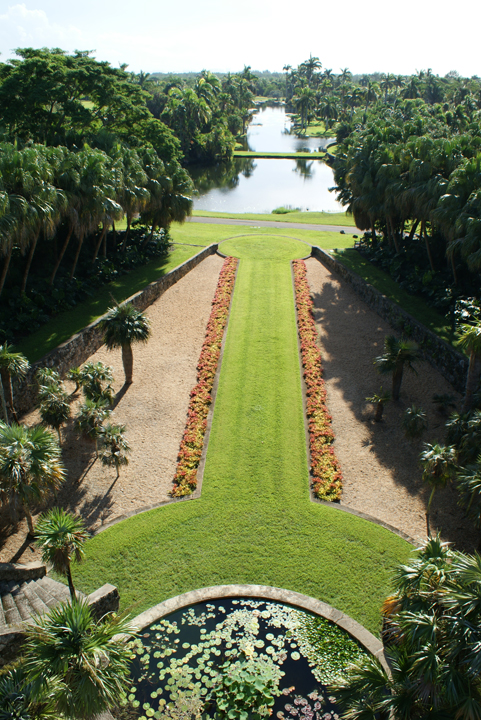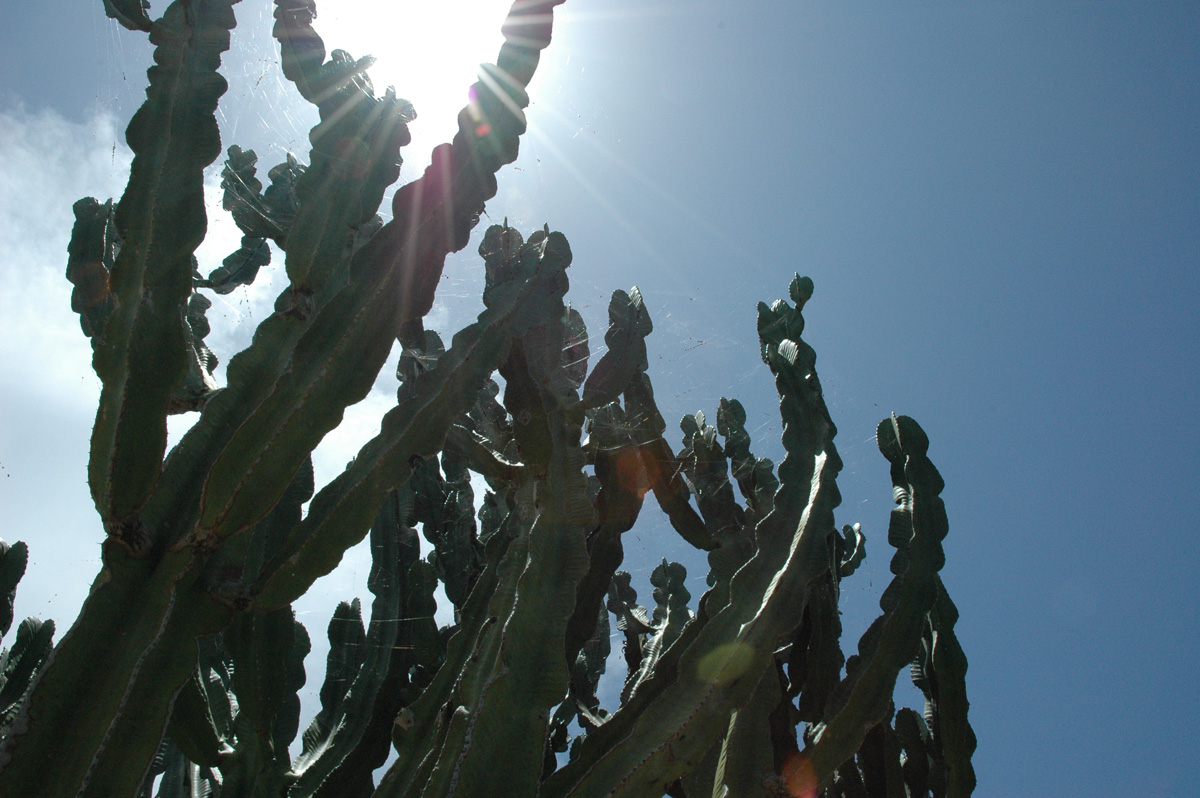The Modern Botanic Garden

This essay on the modern botanic garden was written by Dr. Mike Maunder in 2008 for the journal Nature when he was the Director of Fairchild Tropical Botanic Garden. 
Over their 500 year historical trajectory botanic gardens have retained their core functions, namely the collection and exhibition of plants for scientific and educational purposes. In addition over the last thirty years they have become key institutions working on plant conservation, for instance the Global Strategy for Plant Conservation has in large part been developed and implemented by botanic gardens partnering with international agencies. The scientific responsibilities are huge, with the near complete demise of university botany, so botanic gardens, with the major natural history museums, are now the lead institutions for documenting global plant diversity. Similarly their skills in threatened species management will be ever more vital as the extinction spasm accelerates. More than ever the accumulated plant collections, both living and preserved, of the world’s botanic gardens are invaluable records of what we are losing and, importantly, resources for what we choose to restore. These collections are of immense scientific and cultural value and their viability represents one of the great financial and political challenges for botanic gardens. The botanic garden community has rallied to the challenges of the biodiversity crisis and we have seen the profound rejuvenation of herbaria and seedbanks, simultaneously an equally profound change has occurred in the botanic garden’s public face.
Botanic garden design has changed dramatically, indeed it is sometimes difficult to reconcile the quiet walled enclaves of the early European botanic gardens with the space age domes of the Eden Project and their invigorating botanical cabaret. The features that defined many old botanic gardens, for instance the awkward opening times, uninspiring exhibits, miserable cafes and uninterpreted institutional science, are disappearing. Botanic gardens as translators of environmental science to millions of people of all ages and all communities are demonstrating a vibrant sense of mission in their public places. Importantly they are recognizing that their institutional viability is dependent on interpreting the importance of their own work.
Botanic gardens are becoming more sophisticated business entities and are increasingly dependent upon the support and financial patronage of their public. This is a profound change from the days when the visiting public was seen as an awkward impediment that stood between a curator and absolute horticultural perfection. Botanic gardens are creating gardens and exhibits that inform, inspire and delight. As interpretators of the biodiversity crisis they are learning that, in the words of Thomas Aquinas, “you change people by delight”.

This evolution is particularly notable in the new desert botanic gardens where local floras, declining natural resources and ethnobotanical heritage influence both the mission and the design. The Arizona Sonora Desert Museum established an early model for exhibiting and interpreting the biodiversity of the local ecoregion. This potent hybrid of botanic garden, zoo and museum, has inspired a new generation of desert botanic gardens. The Royal Botanic Garden Jordan near Amman, is specifically designed to showcase the natural habitats and wild species of Jordan, similarly the new Oman Botanic Garden exhibits the plants, ecosystems and ethnobotanical heritage of Oman. The Al Ain Wildlife Park in Abu Dhabi is closer to the Arizona Sonora Desert Museum model being a botanic garden and wildlife park illustrating the biodiversity and cultures of the world’s desert ecosystems, and importantly designed to reconnect the people of the United Arab Emirates with their own desert heritage. In Australia, the Alice Springs Desert Park represents the botanic garden as interpreter of the local ecology, culture and landscape, while the spectacular new Australian Garden at the Royal Botanic Gardens Cranborne, Australia, with its abstraction of those same landscapes, is the urban envoy for the culture and biology of the “Red Center”.
Illustrating a strong combination of effective collaboration between scientists and artists and a locally focused mission is the Ethnobotanical Garden of Oaxaca, Mexico, where pre Hispanic motifs and dramatic design showcases the ethnobotanical heritage of Oaxaca state. The Mexican artist Luis Zárate worked with biologist Francisco Toledo and anthropologist Alejandro de Ávila to create this unique set of garden landscapes. A similar theme can be seen in the “First Peoples Garden” at the Jardin Botanique Montreal where the ethnobotany of Canada is exhibited and interpreted.
China with its traditions of academic botany and love of plants has seen an extraordinary growth in botanic gardens, with only 34 botanic gardens in 1960, China now has approximately 160 botanic gardens. These include some of the world’s largest and richest cultivated plant collections. Not only are new gardens being created, for instance the new Shanghai Chenshan Botanical Garden, but existing gardens such as the Hangzhou Botanical Garden are being renovated as spectacular venues for the public display of botanical diversity. Similarly the new Hengchun Tropical Botanical Gardens in Taiwan characterizes many of the new design and interpretation themes. This garden’s design and storyline reflects the geomorphological, ecological and cultural evolution of Taiwan and celebrates the beauty of the site’s tropical forest habitat.
Much of this new design reflects the increasing interchange of designers between botanic gardens, museums and zoos. Studios and individual designers such as Jon Coe, Jones and Jones, Field Operations, Portico and others are using techniques honed in the zoo and museum world to create innovative botanic garden exhibits. Similarly landscape architects used to designing gardens for private estates are creating astonishing botanic garden landscapes, examples include Raymond Jungles and Made Vijaya at the Naples Botanic Garden in Florida, or Luis Vallejo’s design for the new Oman Botanic Garden in Muscat.
There is a palpable sense of confidence in the botanic garden community. New exhibition spaces are being built that interpret their vital but often historically hidden scientific work, notable examples include the public galleries of the Millenium Seed Bank at RBG Kew or the Pfizer Plant Research Laboratory at New York Botanic Garden. The new Gateway Center at the Royal Botanic Gardens Edinburgh embodies alternative energy sources and reflects the institution’s commitment to leading societal change. “Where better than a botanic garden for people to understand the rapidly changing world, to grasp how to change their behaviour and to mobilize action for a sustainable future?” says Stephen Blackmore, Regius Keeper.
These environmental ethics are reflected in the design of gardens and buildings that demonstrate sustainable maintenance and construction techniques. For instance the new visitor center at the Queens Botanic Garden in New York City was designed to the highest standards of sustainability and has been certified as a Platinum LEED building. The building is part of the institutional story, as Susan Lacerte, the garden’ executive director explained “We are an environmental organization, if we are not going to build green who is?”
Plant collections remain at the core of a botanic garden, these are the resources that traditionally have fed the science and in turn should nurture outreach to the public. However botanic gardens face a challenge, there will always be a temptation to reduce investment in plant collections and to place a stronger emphasis on gardens or exhibits that generate income. This relationship between the business of display and the management of collections has often been dislocated and it is encouraging to see important collections being displayed and used in innovative ways. The new Rhizotron and Xstrata Treetop Walkway at the Royal Botanic Garden Kew have brought life and a story to a traditional arboretum. While it is sometimes hard to make an traditionally displayed plant collection compelling to the visitor we are increasingly seeing plant collections packaged as habitats, either generically as desert or rainforest exhibitions, or specifically linked to habitats or field projects. For instance the Lougheed Spiny Forest of Madagascar exhibit at Fairchild Tropical Botanic Garden is directly linked to Fairchild’s support to field conservation in Madagascar. The garden exhibit and a spectacular collection of Malagasy succulents becomes an arena for supporting field conservation.
While there has always been art in the botanic garden, it is being used with increased gusto as a tool for interpretation and marketing. In some cases previously hidden treasures are being given a new home, for instance the Shirley Sherwood Gallery of Botanical Art at RBG Kew, or historical collections and landscapes are given a contemporary interpretation, such as Mark Dion’s installation at the historic William Bartram Garden in Pennsylvania. Some temporary exhibits are provocative, challenging the visitor to face unpleasant realities, for instance the “Hard Rain” photo exhibits shown at various European botanic gardens uses Bob Dylan’s lyrics and Mark Edward’s apocalyptic photographs to illustrate environmental degradation, or, the more pastoral but equally disturbing “Garden of Extinction” designed by Willem Borshoff and installed at Kirstenbosch Botanic Garden in South Africa.
We have entered the age of the botanic garden “blockbuster” art exhibit, with exhibitions of Roy Lichtenstein at Fairchild Tropical Botanic Garden, Nikki de St Phalle at Missouri Botanic Garden and Dale Chihuly at many locations including the Royal Botanic Garden Kew and Atlanta; when successful these exhibits can have a steroidal impact on attendance and membership figures, as such they can be major engines for advancing institutional status and viability.
P.T. Barnum said “every crowd has a silver lining”, without visitors most botanic gardens will fail, they need their support and their business. Botanic gardens while wrestling with some of the most urgent of environmental and social issues recognize that visitors wish to be inspired and not depressed. The ingenuity of the botanic garden community is apparent in the increasing use of special events to interpret these big awkward issues, for instance a weekend Chocolate or Mango Festival becomes a retail event and a busy weekend for membership sales but importantly an opportunity to interpret the agricultural heritage of the tropics and the challenges of sustainable agriculture.
There is a deep satisfaction to be obtained from experiencing the diversity and abundance of a good botanic garden, whether tropical orchids and palms, an astonishing prairie reconstruction or a seasonal display of apples or chilli peppers. This exposure to botanical diversity, can create experiences that change people’s lives and establish an emotional link with the natural world. The challenge is to build on that emotional or aesthetic response to generate changes in behaviour. Botanic gardens are places of science, education and beauty but also purveyors of an environmental ideology. The design of a botanic garden is a complex synthesis that meshes ethics, heritage and science with the business imperative of marketing and the mission imperative of influencing lives. Botanic gardens exist to serve the fundamental needs of humanity, namely the conservation and sustainable use of plant resources. Botanic gardens need to create landscapes and gardens that are attractive, vibrant and welcoming otherwise we will fail both as businesses and in our fundamental mission to inform and influence.
